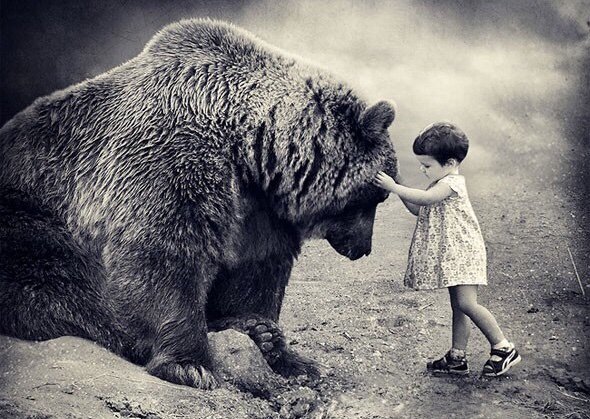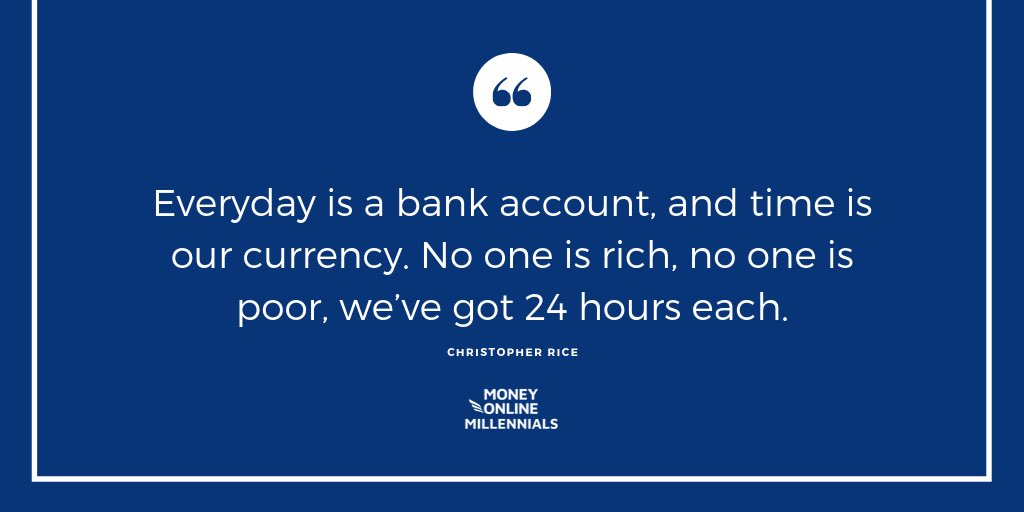Adapt, cope, remain flexible and foster a positive attitude amidst life's ups and downs
Change
Adapt, cope, remain flexible and foster a positive attitude amidst life's ups and downs.
Monday, October 28, 2019
Friday, October 25, 2019
mynah bird
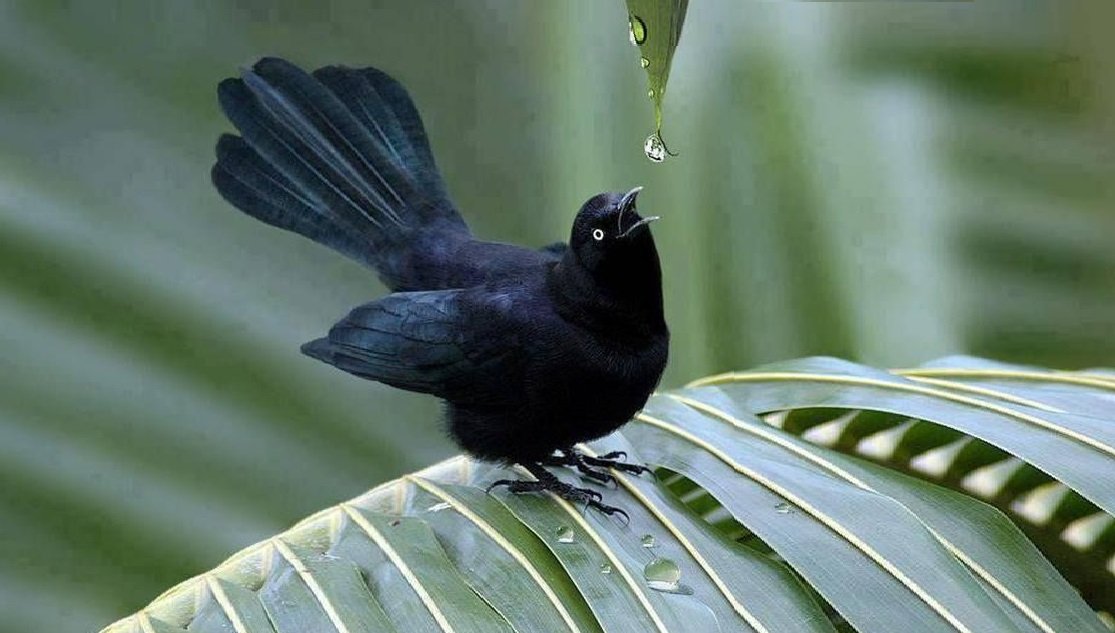
mynah bird ?




Happiness is not the absence of problems it's the ability to deal with them. Steve Maraboli
Being in the Moment
By concentrating on the moment we are in, the worries of the past and the anxieties of the future dissipate.
George Fox/Quotes
I saw also that there was an ocean of darkness and death, but an infinite ocean of light and love, which flowed over the ocean of darkness.
Be still and cool in thine own mind and spirit.
Why should any man have power over any other man's faith, seeing Christ Himself is the author of it?
When the Lord sent me forth into the world, He forbade me to put off my hat to any, high or low.
George Fox was an English Dissenter, who was a founder of the Religious Society of Friends, commonly known as the Quakers or Friends. The son of a Leicestershire weaver, he lived in times of social upheaval and war. Wikipedia
Thursday, October 24, 2019
Laurindo Almeida plays One Note Samba
Laurindo Almeida plays One Note Samba
 Laurindo Almeida plays One Note Samba
Laurindo Almeida plays One Note SambaLaurindo Almeida plays One Note Samba with the Modern Jazz Quartet in 1964.
Laurindo Almeida plays One Note Samba
Laurindo Almeida plays One Note Samba
 Laurindo Almeida plays One Note Samba
Laurindo Almeida plays One Note Samba
Laurindo Almeida plays One Note Samba with the Modern Jazz Quartet in 1964.
Laurindo Almeida with The Modern Jazz Quartet
Uploaded on Nov 1, 2006
and The Modern Jazz Quartet, provided by
Laurindo Almeida in the Heart to
Loronix http://loronix.blogspot.com
Wagner - RIDE OF THE VALKYRIES - Furtwangler
Wagner - RIDE OF THE VALKYRIES - Furtwangler
Wagner - RIDE OF THE VALKYRIES - Furtwangler
The Ride of the Valkyries, by Richard Wagner, in a classic recording with Wilhelm Furtwangler and the Vienna Philharmonic. Illustrations are by Arthur Rackham.
"One golden summer in adolescence...I heard the 'Ride of the Valkyries' on a gramophone and saw Arthur Rackham's illustrations to The Ring." (C.S.Lewis)
The music: probably the most famous and instantly identifiable of Wagner's works is this short orchestral prelude from Die Walkure, the second opera in the monumental Der Ring des Nibelungen. It has gone on to enter popular culture, being used in many films, most notably the helicopter attack sequence in Apocalypse Now. In terms of composition it perfectly demonstrates Wagner's epic sense of drama, and also his masterful orchestration.
The conductor: Wilhelm Furtwangler is probably unrivalled as an interpreter of the core Austro-German Romantic repertoire, setting benchmarks in the performance of Beethoven, Schubert, Brahms, Wagner, Bruckner and others. His recordings include two complete Ring Cycles, both of them classics.
The illustrations: Arthur Rackham was one of the greatest illustrators at the turn of the 19th century, creating classic visions for fairy tales and fantasies (Alice, Peter Pan, etc.).
His work on Der Ring des Nibelungen is often considered one of the finest visual depictions of Wagner's epic.
Link: https://youtu.be/P73Z6291Pt8
Wednesday, October 23, 2019
Aria from Diva - Wilhelmenia Wiggins Fernandez
Aria from Diva - Wilhelmenia Wiggins Fernandez
Composer: Alfredo Catalani
Well, then? I will go far away,
As far as the echo of the church bell,
There, through the white snow,
There, through the golden clouds,
There, where hope, hope
Is regret, is regret and pain!
Oh, from my mother's happy house,
Wally will go away from you, from you.
Far enough away, and maybe,
And maybe, she will never return to you.
You'll never see her again.
Never again, never again.
I will go alone and far away,
As far as the echo of the church bell,
There, through the white snow;
I will go, I will go alone and far,
Among the golden clouds.
Link:
Fiscal Responsibility
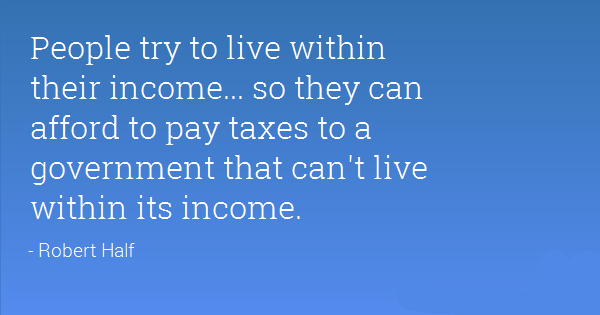
·
·
Achieving every goal begins with a single step. Let's talk about the importance of taking small steps to achieve a goal today on the #betterlifechat! See you then.
·
Your circumstances do not determine your happiness. Having the mindset of “I will be happy when...” will only leave you disappointed. The good news is that you can be happy today, in this very moment. Be grateful for what you have, even if it’s not exactly where you want to be.

Sonia Satra
@soniasatra
A successful morning routine takes is a bit of discipline. Every morning is a starting point. Create a more personal and positive routine that works for you and help you feel calm, controlled and productive. -Thomas Oppong
"A rose by any other name would smell as sweet"

www.pinterest.com
Monday, October 21, 2019
Walk in the Woods
The secret to mindful travel? A walk in the woods
Visit these five destinations to practice the Japanese art of forest bathing.
BY SUNNY FITZGERALD
Whether you call it a fitness trend or a mindfulness practice (or a bit of both), what exactly is forest bathing? The term emerged in Japan in the 1980s as a physiological and psychological exercise called shinrin-yoku (“forest bathing” or “taking in the forest atmosphere”). The purpose was twofold: to offer an eco-antidote to tech-boom burnout and to inspire residents to reconnect with and protect the country’s forests.
TODAY’SPOPULAR STORIES
HISTORY
Puzzling artifacts found at Europe's oldest battlefield
ANIMALS
See the best wildlife photos of 2019
SCIENCE
New seismic phenomenon discovered, named stormquakes
The Japanese quickly embraced this form of ecotherapy. In the 1990s, researchers began studying the physiological benefits of forest bathing, providing the science to support what we innately know: time spent immersed in nature is good for us. While Japan is credited with the term shinrin-yoku, the concept at the heart of the practice is not new. Many cultures have long recognized the importance of the natural world to human health.
Forest bathing is not just for the wilderness-lover; the practice can be as simple as walking in any natural environment and consciously connecting with what’s around you. For a more structured experience, you can join trained guides for a meditative two- to three-hour ecotherapy excursion. Here are five places to try forest bathing.

Adirondack Park, in New York, is larger than Yellowstone, Yosemite, and Grand Canyon combined and provides a rich forest bathing experience.PHOTOGRAPH BY MICHAEL MELFORD, NAT GEO IMAGE COLLECTION
Adirondack Mountains, New York
Forest bathers will find ample room to roam in the Adirondack Park. Stretching across more than six million acres of New York State and home to more than a hundred peaks and some 2,000 miles of hiking trails, it’s the largest protected area in the contiguous United States. Native evergreens are both aromatic and release a high concentration of phytoncides—airborne essential oils that provide a natural immunity boost. The health benefits of this phytoncide “shower” can last for weeks. Evergreen needles are rich in antioxidants and vitamin C and some—such as spruce, eastern hemlock, balsam, and pine—can be steeped and sipped as a tea.
Certified forest therapy guides Helene Gibbens and Suzanne Weirich of Adirondack Riverwalking offer guided forest bathing year-round in Lake Placid, Saranac Lake, and the Wild Center, an award-winning natural science museum of the Adirondacks. Local tip: seeing the fall foliage and snowshoeing in winter are peak experiences.
Costa Rica
With more than 50 percent of the country covered by forest, Costa Rica is a forest bathing paradise. Nearly six percent of the world’s biodiversity is found here, so whether you wander through a misty cloud forest in Monteverde, hike across hanging bridges suspended amidst the canopy near Arenal Volcano, stroll a lowland rainforest trail along the Sarapiqui River, or explore a protected forest reserve just outside San Jose city center, you’ll have countless opportunities to observe wildlife and activate your senses. (Tourism could make or break this biodiverse haven.)
Pause
Unmute
Current Time 0:14
/
Duration 0:15
Loaded: 0%
Progress: 0%Fullscreen
AD ENDS IN: 0:01
RELATED: FOREST BATHING 101
Learn about forest bathing, a practice in which all of your senses are immersed in nature.
Guided forest bathing walks are available through Sentir Natural and led by local naturalist Manuela Siegfried, the first Association of Nature and Forest Therapy–certified guide in Costa Rica.
New Zealand
Stand in the presence of living legends in the North Island’s Waipoua Forest, where the oldest and largest kauri trees in the world live. Sacred to Māori people, kauri are considered “protectors of the forest.” The transition from daylight to night is accompanied by Māori songs and storytelling. Footprints Waipoua organizes walks among the kauri trees including the Twilight Encounter, led by Māori guides.
Local Samburu guides lead travelers through a forest in northern Kenya.PHOTOGRAPH COURTESY KITICH FOREST CAMP
Kenya
You may not immediately associate this East African nation with forest bathing. But in the Matthews Range, in the Laikipia district of the Rift Valley, ancient forests are home to endemic plants, cedars, wild orchids, more than 350 bird species, elephants, and one of the only populations of de Brazza monkeys in the country—all ingredients for a sensory immersion excursion. Guided forest walks from Kitich Forest Camp are led by local Samburu trackers with intimate knowledge of the sounds, scents, and sights of the forest. (Set off on these 17 unforgettable African safaris.)
RELATED: SERENE PICTURES OF FOREST BATHING
1/11VIEW SLIDESHOW
When photographer Tali Kimelman returned home after a full day in the forest, a pervasive sense of bliss would linger until night fell. “I went to bed with such a nice feeling, calm, happy, and I didn't even know why… It really effects how you feel," she says.PHOTOGRAPH BY TALI KIMELMAN
Photographer Tali Kimelman's forest bathing series invites the viewer on a sensory journey.PHOTOGRAPH BY TALI KIMELMAN
Arboretum Lussich, a 470-acre nature reserve on the southeastern coast of Uruguay, has been transformed over a hundred years from arid dunes to lush vegetation.PHOTOGRAPH BY TALI KIMELMAN
“When I feel I have too much in my mind, I go to nature," Kimelman says.PHOTOGRAPH BY TALI KIMELMAN
“You walk and let everything get into you,” Kimelman says. “[You] stop, look at the colors, the details, the little drops moving … There is another world in there.”PHOTOGRAPH BY TALI KIMELMAN
Arboretum Lussich, a 470-acre nature reserve on the southeastern coast of Uruguay, has been transformed over a hundred years from arid dunes to lush vegetation.PHOTOGRAPH BY TALI KIMELMAN
Arboretum Lussich, a 470-acre nature reserve on the southeastern coast of Uruguay, has been transformed over a hundred years from arid dunes to lush vegetation.PHOTOGRAPH BY TALI KIMELMAN
Arboretum Lussich, a 470-acre nature reserve on the southeastern coast of Uruguay, has been transformed over a hundred years from arid dunes to lush vegetation.PHOTOGRAPH BY TALI KIMELMAN
Arboretum Lussich, a 470-acre nature reserve on the southeastern coast of Uruguay, has been transformed over a hundred years from arid dunes to lush vegetation.PHOTOGRAPH BY TALI KIMELMAN
“I just enjoyed the feeling of going nowhere,” says Kimelman. "I just let myself get lost.”PHOTOGRAPH BY TALI KIMELMAN
Where the foliage borders the frame, a path beckons.PHOTOGRAPH BY TALI KIMELMAN
Hawaii
A deep connection to the`aina (land) is central to Hawaiian culture. Forests here are traditionally revered as life-giving for the natural materials they provide and the spiritual needs they satisfy. It’s easy to see how the abundance of aromatic flowers, medicinal plants such as māmaki, and 175 types of native trees—the majority of which are found only in this remote island chain—inspire travelers and locals to stop and smell the tuberoses. In Hawaii, opportunities to bathe in nature are boundless. Pick a spot under a banyan tree and enjoy the salty sea breeze. Pause by a plumeria plant and inhale the sweet scent. Or join a guided walk with Forest Bathing Hawai`i, led by local Phyllis Look, the first guide in the state to be certified by the Association of Nature and Forest Therapy.
Sunny Fitzgerald is a freelance writer, sustainable travel specialist, and a regular contributor to Kama`aina Magazine. You can follow her on Instagram.
PUBLISHED OCTOBER 18, 2019
SHARE
TWEET
COPY
Summer at the Lake: Saranac Lake
Your Rafting and Kayaking Photos
Where to Stay in the Adirondacks
THE BEST OF NATIONAL GEOGRAPHIC DELIVERED TO YOUR INBOX.
Sign up for world-class photos, inspiring stories, and more.
By signing up for this email, you are agreeing to receive news, offers, and information from National Geographic Partners, LLC and our partners. Click here to visit our Privacy Policy. Easy unsubscribe links are provided in every email.
READ THIS NEXT
ADVENTURE
Canoe the Adirondacks, New York
See trip details for canoeing the Adirondacks in New York, one of 100 Best American adventure trips from National Geographic.
LATEST IN
TRAVEL
TRAVEL
The secret to mindful travel? A walk in the woods
READ
TRAVEL
See spectacular fall foliage in these national parks
READ
TRAVEL
The world’s best ghost towns will surprise you
READ
TRAVEL
Why is Bauhaus such a big deal in design?
READ
TRAVEL
Garden cemeteries were among America’s first urban parks
READ
LOAD MORE
FROM THE MAGAZINE
MAGAZINE
Deepest Dive Under Antarctica Reveals a Shockingly Vibrant World
READ MORE
LATEST IN
HISTORY
HISTORYWOMEN OF IMPACT
How wheelchair basketball changed these women's lives
READ
HISTORY
Road built by biblical villain uncovered in Jerusalem
READ
HISTORY
Why Harriet Tubman risked it all for enslaved Americans
READ
HISTORY
Why does Amelia Earhart still fascinate us?
READ
HISTORY
Puzzling artifacts found at Europe's oldest battlefield
READ
LOAD MORE
LATEST IN
SCIENCE
HISTORY
Road built by biblical villain uncovered in Jerusalem
READ
SCIENCE
Your shoes are made of plastic. Here’s why.
READ
SCIENCEWOMEN OF IMPACT
First all-woman space walk puts spotlight on spacesuit design
READ
HISTORY
Why does Amelia Earhart still fascinate us?
READ
SCIENCE
Fossil 'conga lines' reveal origins of animal swarms
READ
LOAD MORE
POPULAR SCIENCE STORIES
SCIENCE
The Amazing Dinosaur Found (Accidentally) by Miners in Canada
READ MORE
LATEST IN
ANIMALS
ANIMALS
This bizarre primate has a newly discovered digit
READ
ANIMALS
World’s fastest ants found racing across the Sahara
READ
ANIMALS
Why cemeteries are a surprising source of life
READ
ANIMALS
Humpback whales herd salmon with their fins, new photos reveal
READ
ANIMALS
See the best wildlife photos of 2019
OCTOBER 21, 2019
ITALIAN SUMMERPHOTOGRAPH BY LORENZO GRIFANTINI, NATIONAL GEOGRAPHIC YOUR SHOT
This photo was submitted to Your Shot, National Geographic’s photo community where photographers can take part in photo assignments, get expert feedback, and more.
TRIP TYPE
 See All TripsRequest a Catalog
See All TripsRequest a CatalogExistential Crisis
I love this photo because it tells it a story.
Existential Crisis
In his paper, The Absurd, Thomas Nagel analyzed the perpetual absurdity of human life. Absurdity in life becomes apparent when we realize the fact that we take our lives seriously, while simultaneously perceiving that there is a certain arbitrarity in everything we do. He suggests never to stop searching for the absurd. Furthermore, he suggests searching for irony amongst the absurdity.
The Absurd � Thomas Nagel
In this selection, Nagel attempts to analyze a sentiment that is often expressed by those contemplating the meaning of life � namely, that �life is absurd.� He argues first that the reasons that are ordinarily given for thinking that life is absurd are inadequate. He maintains, though, that there is indeed a sense in which the human condition is absurd, and attempts to show why this is so. He further argues, though, that the absurdity of our lives need not be a source of distress for us.
It is sometimes suggested that the human condition is absurd because nothing we accomplish will matter in the distance future. But if this is so, Nagel maintains, then it must also be the case that facts about the distant future also do not matter now. But if that is right, then the fact that nothing I accomplish now will matter in the distant future is a fact that should not matter to me now. Thus, this is an insufficient reason for thinking that life is absurd. Nagel recognizes that people often rely on pointing out the brevity of a human life, and the relative minuteness of a human being in order to demonstrate that human lives are absurd. Again, though, Nagel thinks that these are considerations that are irrelevant to absurdity. He maintains that having infinitely long lives, or being infinitely large, would not diminish the absurdity. Next, he considers the argument that life is absurd because we cannot provide ultimate justification for our behavior in light of the fact that we will, at some point in the future, cease to exist. Nagel again rejects this reasoning; it is not the case that chains of justification need continue indefinitely.
In order to demonstrate that human life is indeed absurd, Nagel begins with a short analysis of how we ordinarily understand the concept. Absurdity results when there is a certain incongruity between the way the world actually is, and the �pretension or aspiration� of our dealings with the world. Absurdity concerning the human condition arises, then, when we attend to the fact that we take our lives extremely seriously, while simultaneously noting that there is a certain arbitrariness to everything that we do. Nagel then attempts to argue that we do indeed take our lives seriously, and secondly, that we are incapable of avoiding doubts about the importance or meaning of our lives. He notes several similarities that the argument for absurdity shares with arguments for epistemological skepticism. Just as skepticism, though, does not cast us into despair concerning our claims to knowledge, Nagel maintains that the absurdity of our lives should not be treated as a threatening problem.
Sunday, October 20, 2019
Thursday, October 17, 2019
Moscow Mitch and his slime machine
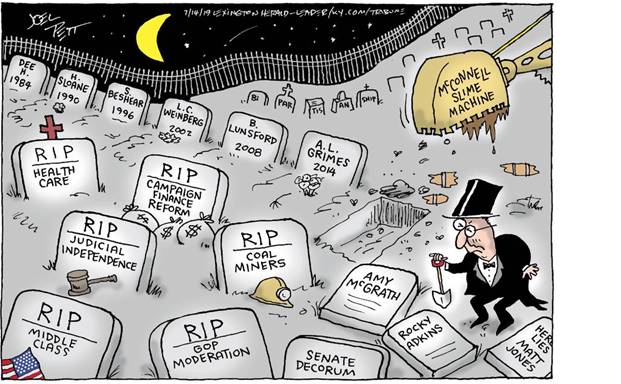

/cdn.vox-cdn.com/uploads/chorus_image/image/61662815/3046716.jpg.0.jpg)
A leading Holocaust historian just seriously compared the U.S. to Nazi Germany
“If the US has someone whom historians will look back on as the gravedigger of American democracy, it is Mitch McConnell.”
By Zack Beauchamp@zackbeauchampzack@vox.com
Oct 5, 2018
Usually, comparisons between Donald Trump America and Nazi Germany come from cranks and internet trolls. But a new essay in the New York Review of Books pointing out “troubling similarities” between the 1930s and today is different: It’s written by Christopher Browning, one of America’s most eminent and well-respected historians of the Holocaust. In it, he warns that democracy here is under serious threat, in the way that German democracy was prior to Hitler’s rise — and really could topple altogether.
Browning, a professor emeritus at the University of North Carolina, specializes in the origins and operation of Nazi genocide. His 1992 book Ordinary Men, a close examination of how an otherwise unremarkable German police battalion evolved into an instrument of mass slaughter, is widely seen as one of the defining works on how typical Germans became complicit in Nazi atrocities.
So when Browning makes comparisons between the rise of Hitler and our current historical period, this isn’t some keyboard warrior spouting off. It is one of the most knowledgeable people on Nazism alive using his expertise to sound the alarm as to what he sees as an existential threat to American democracy.
Browning’s essay covers many topics, ranging from Trump’s “America First” foreign policy — a phrase most closely associated with a group of prewar American Nazi sympathizers — to the role of Fox News as a kind of privatized state propaganda office. But the most interesting part of his argument is the comparison between Senate Majority Leader Mitch McConnell and Paul von Hindenburg, the German leader who ultimately handed power over to Hitler. Here’s how Browning summarizes the history:
Paul von Hindenburg, elected president of Germany in 1925, was endowed by the Weimar Constitution with various emergency powers to defend German democracy should it be in dire peril. Instead of defending it, Hindenburg became its gravedigger, using these powers first to destroy democratic norms and then to ally with the Nazis to replace parliamentary government with authoritarian rule. Hindenburg began using his emergency powers in 1930, appointing a sequence of chancellors who ruled by decree rather than through parliamentary majorities, which had become increasingly impossible to obtain as a result of the Great Depression and the hyperpolarization of German politics.
Because an ever-shrinking base of support for traditional conservatism made it impossible to carry out their authoritarian revision of the constitution, Hindenburg and the old right ultimately made their deal with Hitler and installed him as chancellor. Thinking that they could ultimately control Hitler while enjoying the benefits of his popular support, the conservatives were initially gratified by the fulfillment of their agenda: intensified rearmament, the outlawing of the Communist Party, the suspension first of freedom of speech, the press, and assembly and then of parliamentary government itself, a purge of the civil service, and the abolition of independent labor unions. Needless to say, the Nazis then proceeded far beyond the goals they shared with their conservative allies, who were powerless to hinder them in any significant way.
McConnell, in Browning’s eyes, is doing something similar — taking whatever actions he can to attain power, including breaking the system for judicial nominations (cough cough, Merrick Garland) and empowering a dangerous demagogue under the delusion that he can be fully controlled:
If the US has someone whom historians will look back on as the gravedigger of American democracy, it is Mitch McConnell. He stoked the hyperpolarization of American politics to make the Obama presidency as dysfunctional and paralyzed as he possibly could. As with parliamentary gridlock in Weimar, congressional gridlock in the US has diminished respect for democratic norms, allowing McConnell to trample them even more. Nowhere is this vicious circle clearer than in the obliteration of traditional precedents concerning judicial appointments. Systematic obstruction of nominations in Obama’s first term provoked Democrats to scrap the filibuster for all but Supreme Court nominations. Then McConnell’s unprecedented blocking of the Merrick Garland nomination required him in turn to scrap the filibuster for Supreme Court nominations in order to complete the “steal” of Antonin Scalia’s seat and confirm Neil Gorsuch. The extreme politicization of the judicial nomination process is once again on display in the current Kavanaugh hearings. ...
Whatever secret reservations McConnell and other traditional Republican leaders have about Trump’s character, governing style, and possible criminality, they openly rejoice in the payoff they have received from their alliance with him and his base: huge tax cuts for the wealthy, financial and environmental deregulation, the nominations of two conservative Supreme Court justices (so far) and a host of other conservative judicial appointments, and a significant reduction in government-sponsored health care (though not yet the total abolition of Obamacare they hope for). Like Hitler’s conservative allies, McConnell and the Republicans have prided themselves on the early returns on their investment in Trump.
This is the key point that people often miss when talking about Hitler’s rise. The breakdown of German democracy started well before Hitler: Hyperpolarization led Hindenburg to strip away constraints on executive power as well as conclude that his left-wing opponents were a greater threat than fascism. The result, then, was a degradation of the everyday practice of democracy, to the point where the system was vulnerable to a Hitler-style figure.
Now, as Browning points out, “Trump is not Hitler and Trumpism is not Nazism.” The biggest and most important difference is that Hitler was an open and ideological opponent of the idea of democracy, whereas neither Trump nor the GOP wants to abolish elections.
What Browning worries about, instead, is a slow and quiet breakdown of American democracy — something more much like what you see in modern failed democracies like Turkey. Browning worries that Republicans have grown comfortable enough manipulating the rules of the democratic game to their advantage, with things like voter ID laws and gerrymandering, that they might go even further even after Trump is gone:
No matter how and when the Trump presidency ends, the specter of illiberalism will continue to haunt American politics. A highly politicized judiciary will remain, in which close Supreme Court decisions will be viewed by many as of dubious legitimacy, and future judicial appointments will be fiercely contested. The racial division, cultural conflict, and political polarization Trump has encouraged and intensified will be difficult to heal. Gerrymandering, voter suppression, and uncontrolled campaign spending will continue to result in elections skewed in an unrepresentative and undemocratic direction. Growing income disparity will be extremely difficult to halt, much less reverse.
I’ve observed this kind of modern authoritarianism firsthand in Hungary. In my dispatch after visiting there, I warned of the same thing as Browning does here: The threat to the United States isn’t so much Trump alone as it is the breakdown in the practice of American democracy, and the Republican Party’s commitment to extreme tactics in pursuit of its policy goals in particular.
We are living through a period of serious threat to American democracy. And Browning’s essay, a serious piece by a serious scholar, shows that it’s not at all alarmist to say so.
Link: https://www.vox.com/policy-and-politics/2018/10/5/17940610/trump-hitler-history-historian
How to evaluate information, from social media to scholarly articles.
Sheridan Libraries
Guides
Evaluating Information
Evaluating Social Media
How to evaluate information, from social media to scholarly articles.
Home
Evaluating Sources
Evaluating Internet Resources
Evaluating Social Media
Propaganda vs. Misinformation
Peer ReviewToggle Dropdown
Fake News and Your Brain
How Fake News Tricks your Brain
Accuracy Checklist
Social media can provide instant news faster than traditional news outlets or sources and can be a great wealth of information, but there is also an ever increasing need to verify and determine accuracy of this information. Here are some items to consider that can help determine authenticity:
Location of the source - are they in the place they are tweeting or posting about?
Network - who is in their network and who follows them? Do I know this account?
Content - Can the information be corroborated from other sources?
Contextual updates - Do they usually post or tweet on this topic? If so, what did past or updated posts say? Do they fill in more details?
Age - What is the age of the account in question? Be wary of recently created accounts.
Reliability - Is the source of information reliable?
Tips for Citing Social Media
Check the manuals for your style guide for the most up-to-date information. If your style guide doesn't cover it in print, then look to their online website to see if they've included some information there on proper citation for these social media formats. Also try our citing guide for more information or email your librarian.
APA Suggestions for citing twitter on Face Book
Introduction
According to Twitter, the site has more than 140 million active users, with over 340 million Tweets per day. This means that one billion tweets are sent every three days. More and more people get news and information from news media, but it's important to remember that fast does not always mean accurate.
How to identify credible information on social media can be challenging. Rumors and misinformation can spread quickly through social media outlets such as Twitter or Facebook. Some of the criteria used to evaluate Internet sources, such as being skeptical, asking questions, looking at the quality of the source of the information, still apply in social media. At the same time, a new and quicker way to exchange information, without some of the clues of authorship provided by more traditional online sources, means we can add some new techniques and approaches to evaluating information.
Storyful recently added four case studies that show how they verified online videos and other content for clients. From their blog:
"At Storyful, we interrogate content shared on the social web in a style not dissimilar Barber’s grilling of dignitaries of media and politics. We adopt a natural skepticism to every item of content we discover. Verification is a cornerstone of our work and it has to be. Information and content often spreads across social media in ‘Chinese whispers’ fashion. Videos and images are spliced, diced and re-posted. Context and details change, agendas compete. Falsehoods and fabrications are deliberately issued.
Within an hour of the Pacific tsunami alert being issued on April 11, 2012, Twitter and YouTube abounded with videos purporting to show monster waves striking the coast of Sumatra and Aceh in Indonesia. However, these were versions of the devastating 2004 tsunami and other dramatic videos, reissued with the 2012 date. In December 2011, when a police officer was killed at Virginia Tech in the US, a picture of the 2007 massacre was widely circulated as the 2011 event. In both instances, Storyful was quickly able to debunk this content as false."
Verifying information is important regardless of the type of social media outlet. Twitter is not immune to fake accounts. Recently, a manager from Google created a bot that attracted followers on Twitter. When the bot posted about a running injury, followers expressed concern over her injury. Wired initially reported on this story and it seems that the bot account has since been suspended. In an experiment conducted late last year, researchers created nine Twitter bots that were able to attract, on average, 62 followers each over a three-week period. This rise in the use of bots raises questions about how easy it might be for someone to try to influence news via social media outlets.
If you are unsure whether a social media post is from a person or bot, do not use the source.
Verifying Information from Social Media
Paul Bradshaw, a leading digital media expert and teacher in Europe, writes the Online Journalism Blog. In 2011, he wrote a post that provides a variety of basic guidelines about online verification with a section related to social media:
How long has the account existed? If it’s only existed since a relevant story broke (e.g. Jan Moir’s column; an earthquake where someone claims to be a witness) then it’s likely to be opportunistic.
Who did the person first ‘follow’ or ‘friend’? These should be personal contacts, or fit the type of person you’re dealing with. If their first follow is ReadWriteWeb, then it may be that you’re not actually dealing with a Daily Mail columnist.
Who first followed them? Likewise, it should be their friends and colleagues.
Who has spoken to them online? Ditto.
Who has spoken about them? Here you may find friends and colleagues, but also people who have rumbled them. But don’t take anyone else’s word for their existence unless you can verify them too.
Can you correlate this account with others? The Firefox extension Identify is a useful tool here: it suggests related social network accounts which you can then try to cross-reference. For companies the Chrome extension Polaris Insights does something similar for companies.
Wednesday, October 16, 2019
Checklist for social media:
Accuracy and accountability checklist for social media:
Way back in the early fall, when the Online News Association conference was going on here in D.C., Craig Silverman of Regret the Error did a greataccuracy workshop in conjunction with TBD. He created an accuracy checklist aimed at helping reporters avoid common errors. My boss, Steve Buttry,expanded on Silverman’s list at his own blog a couple of weeks ago. This checklist approach inspired me to think of ways to avoid accuracy and reporting errors in my own little corner of the journalism world.
In the rapid-fire world of social media, it’s easy for a journalist or news organization to make mistakes. Sometimes, these things happen in the heat of the moment, but more often than not the errors seem to stem from a widespread belief amongst journalists that Twitter carries less need for accuracy and accountability than the full-story medium.
Recent events have told us otherwise.
I believe there is an ever-increasing need for accuracy and accountability in how we as journalists use social media. This inspired me to start my own accuracy checklist for the TBD staff, but I thought it may be better to share with a larger audience. Feel free to add your notes and additions in the comments. I consider this a work in progress.
Accuracy Checklist for Social Media
Before tweeting:
- How do I know this information?
- Is this information independently confirmed? Should it be first?
- Do I know the location of the news event? Check a map.
- Will this require follow-up tweets to better explain? Do I know this story well enough to follow-up?
When tweeting:
- Are proper names spelled correctly?
- Does the link go to the right place? Is it shortened properly?
- Are any Twitter handles included? Do they go to the right accounts?
- Does this tweet have/need attribution for reported facts?
- Does this tweet need a hat tip for another Twitter account/news outlet who first alerted you to the info?
- Is a location included/necessary?
- Is this tweet short enough to be easily re-tweeted?
- Check to see if auto-correct changed the text intended.
- Check your shorthand and contractions to make sure they make sense.
When re-tweeting:
- Is it clear why I want to share this tweet, or does it need context?
- Is this tweet reporting heretofore unknown information?
- If so, is this source reliable enough to throw your name behind?
- Is the original tweet written clearly enough to be passed on from me?
- Do I know this account? Research them to verify it.
When sharing on Facebook:
- Is the image that shows up in my link preview actually connected to the story?
- Is the post text and headline reflective of the content of the story?
- Are any tagged users in images/posts the correct people?
What’s missing here? Let me know. eventually, I’ll make this look spiffy and get it online as a lovely printable document.
http://zombiejournalism.com/2011/01/accuracy-and-accountability-checklist-for-social-media/trackback/
http://zombiejournalism.com/2011/01/accuracy-and-accountability-checklist-for-social-media/
Subscribe to:
Posts (Atom)

